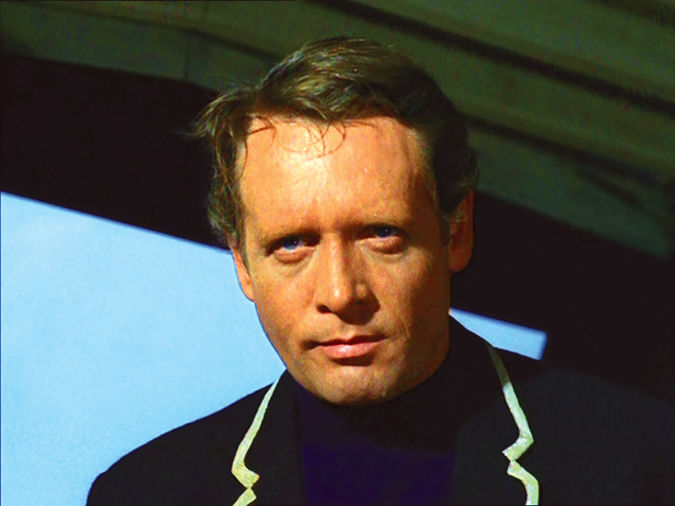When I think of my misspent youth in front of a cathode ray tube, I recall how television in its limited form way back then was a way to plot the seasons.
Growing up in Los Angeles we were constantly reminded by the Sisters of Providence who taught us that in the Midwest there were four real seasons where summer was hot, winter was cold and leaves actually turned magnificent colors in the autumn. We would tell our nuns that we did have seasons here in Los Angeles: There was the new television season in the fall and “rerun season” in the summer.
It may be hard to fathom now where people have more computing power in their smart phones than the crews of the Apollo space crafts possessed, but there was a time when television was likewise, limited.
There were seven major network and local independent television stations when I was growing up at a time when there were still nine planets and four Beatles. But even then my parents knew television was a medium that needed monitoring. So on “school” nights, television watching was curbed at the uncivilized hour of 8 o’clock. If there was something particularly exciting like a movie of the week, it might be extended to 9, but that was it.
Friday night was always my favorite. Not only was the specter of the next week of school only a distant threat, the television curfew was lifted and we were “free” to watch what we wanted. In layman’s terms, that meant watching what our parents allowed us to watch.
And Friday night was “popcorn” night, and with any luck one of the local channels would show an old movie, preferably a jungle picture or better yet, a horror movie like “The Wolfman,” “King Kong” or “Dracula.” Usually horror movies meant we would have to retreat to the “TV Room,” a room set aside for our uncle who lived within our big extended family. Although his black and white TV was miniscule by today’s standards, he would let us all sit around and watch a horror movie our dad preferred not to watch on the “big” TV.
And then there was summer, where every night was “Friday” night. Again, a different epoch altogether where, dinosaurs may not have roamed the earth, but it was certainly light years away from today as evidenced by the advent of the “summer television season.”
Summer replacement shows as they were called, were placeholders of sorts when the networks (remember, there was no cable, no multi-channel platforms and syndication of television was in its very infancy) would give their regular shows a rest and in their stead, either try out experimental concepts or throw in a bunch of reruns. We weren’t much interested in the reruns.
But there was one experiment they tried that captured our imagination. It’s a series that, although kind of a time capsule of the latter part of the 1960s, is well worth a nod to your Netflix DVD cue.
“The Prisoner” was the brainchild of the late actor, writer, director and all-around cool guy Patrick McGoohan. Because we live in such a short attention span culture, a lot people have forgotten. But for a time Patrick McGoohan was a pretty big star.
His initial bout with international stardom came from a series called “Danger Man/Secret Agent” in the early 1960s where he played a cerebral secret agent. He was so popular in this he was offered the role of James Bond before Sean Connery but declined because he thought the character of Bond was immoral. Even the most benign reverse engineering job of the Bond character would produce a similar conclusion. In any event, that kind of career courage should give you some idea of the kind of person Patrick McGoohan was.
With the production company of “Danger Man” desperate to keep their restless star in house, they offered McGoohan the opportunity to create his own show on his own terms and the result was “The Prisoner.” It was about another secret agent, but that’s where any similarity with standard ’60s era melodrama ends.
No spoiler alert necessary here, “The Prisoner” was about a secret agent who, in the opening credits we see, angrily resigns his position, gets drugged and kidnapped. He wakes in a well-appointed apartment in a too good to be true genteel and idyllic “Village” where everyone smiles and wishes everyone else a good day with the refrain “Be seeing you.”
Oh, and no one has a name in “The Village,” only a number and no one is allowed to leave. McGoohan’s character is known only as Number Six and he spends the 17 episodes of “The Prisoner” either trying to escape from the Village, discover who Number One is or maintain his own sense of individuality.
Yes, it’s a little artsy and even a little dated, but I suggest you rent the DVD of this television milestone and have your very own “summer” television season. There is much to glean from this seminal work and McGoohan’s own Catholicity comes through in various ways.
From our current Catholic perspective “The Prisoner” provides a cautionary tale about the allure of conformity — something especially dangerous as we now live in a culture that is not always hospitable to Christian virtues. So take a break from your normal television viewing habits and give “The Prisoner” a try. You may just find out who Number One is…or isn’t.
Robert Brennan has been a professional writer for more than 30 years, including many years in the television industry. He has been a contributing writer for the National Catholic Register for many years and has also been published in Our Sunday Visitor and This Rock.

